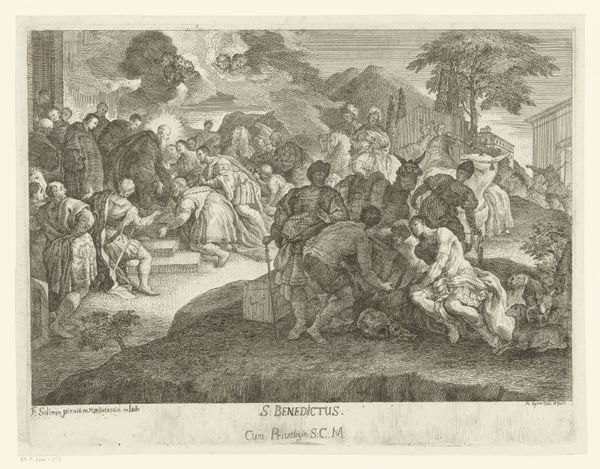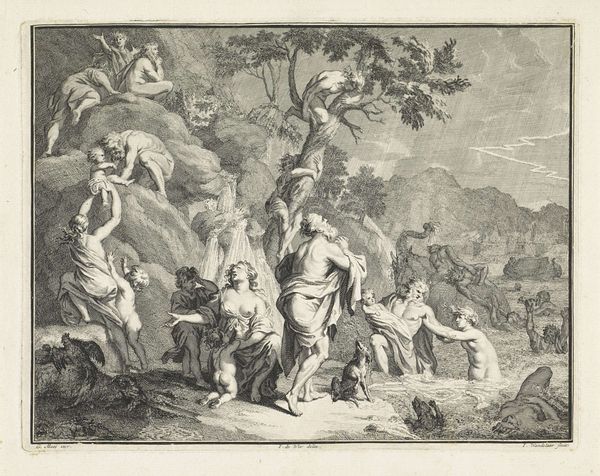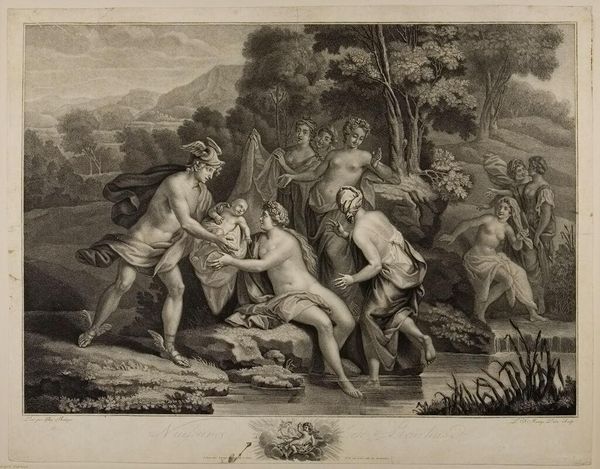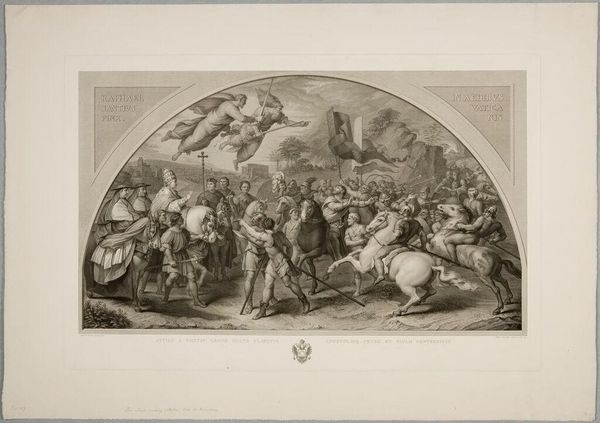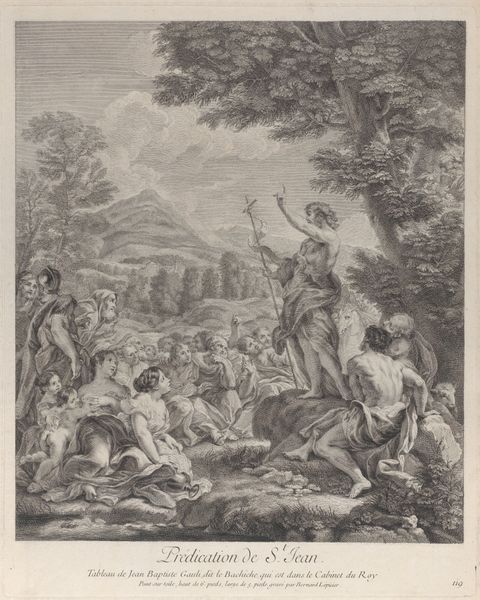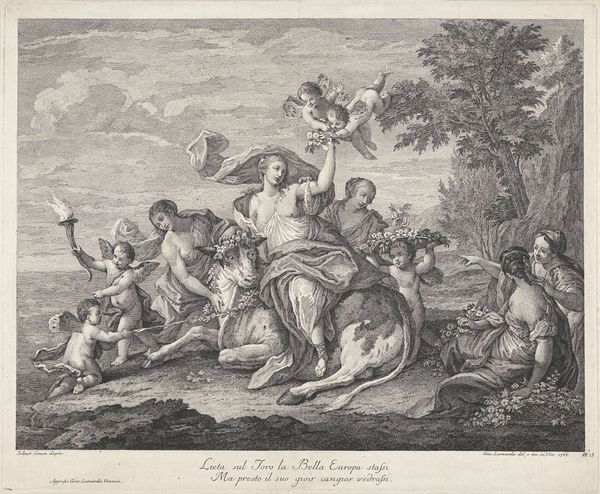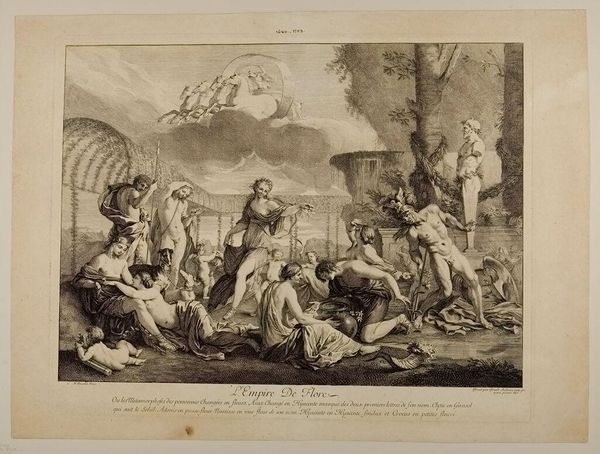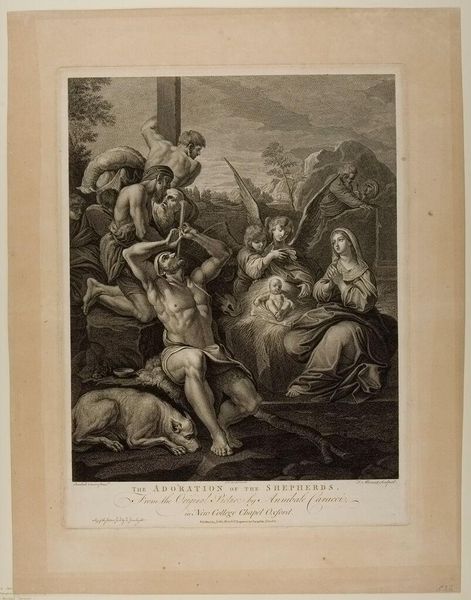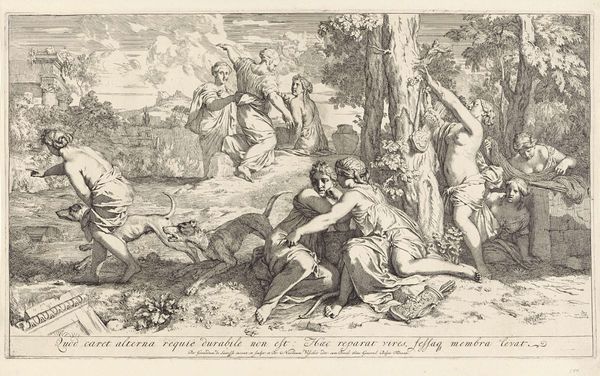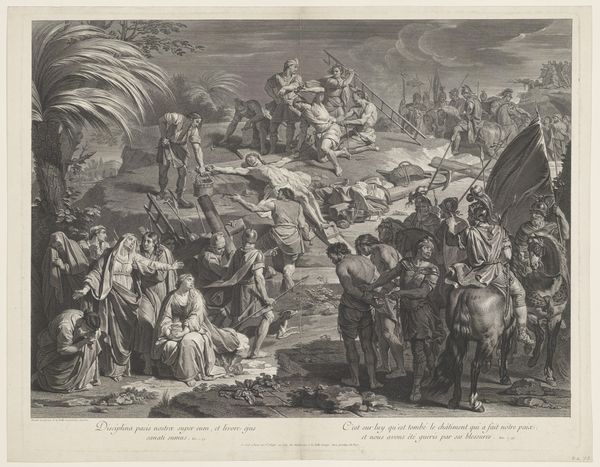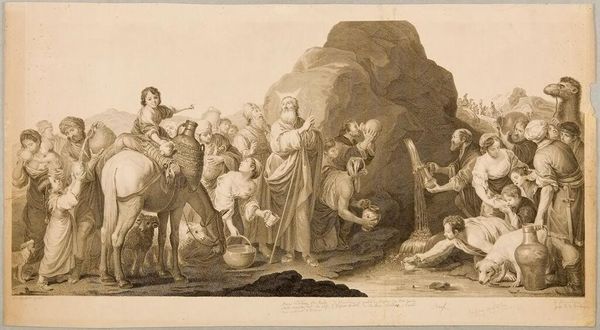
Moses Striking the Rock 17th-18th century
Dimensions: Image: 23.4 Ã 35.4 cm (9 3/16 Ã 13 15/16 in.) Plate: 26.2 Ã 36 cm (10 5/16 Ã 14 3/16 in.) Sheet: 29.3 Ã 39.9 cm (11 9/16 Ã 15 11/16 in.)
Copyright: CC0 1.0
Curator: Let's look at this print, "Moses Striking the Rock," by Jean Audran. The image captures a pivotal moment from the Old Testament. Editor: The scene is teeming with desperation! I immediately see a cluster of figures in obvious distress. What can you tell me about the politics of this scene? Curator: During the Israelites' exodus, they lacked water, and Moses, at God's command, struck a rock to provide it. This becomes a potent symbol of divine intervention, of course. Editor: Absolutely. And within the narratives of liberation, we see how access to resources—like water here—becomes inextricably linked to power and control. Who gets access, and who is denied? Curator: Right. In Audran's time, images like this reinforced religious and social hierarchies. The miracle affirms Moses's authority and, by extension, the authority of the Church and the monarchy. Editor: So this isn’t just a biblical story, it is a reminder of who yields power in a very immediate way. Curator: Precisely. Looking at the print through that lens helps us appreciate how images reinforce the status quo. Editor: And thinking about that can teach us about how art reflects power dynamics even today.
Comments
No comments
Be the first to comment and join the conversation on the ultimate creative platform.
